Yogyakarta
Yogyakarta: Cultural Center of Java
Date Visited: April 2021
Getting There
There are non-stop flights to Yogyakarta (more commonly known to Indonesians as “Jogja”) from Jakarta and many other Indonesian cities. For a budget option you can take an economy class train from Jakarta (Gambir Station and others). Be aware that the new international airport is quite a distance from the city center when planning your stay.
The Context of My Visit
I visited Jogja during perhaps the worst period of the COVID pandemic. Almost nothing in the city was open. I was almost totally unable to take advantage of Jogja’s cultural activities and culinary offerings. I hope to visit again when I can actually fully enjoy Jogja’s cultural riches.
Villa Rosseno
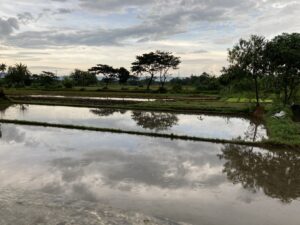
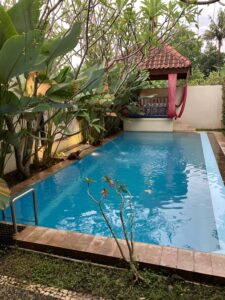
The positive aspect of my visit was that lodging was incredibly inexpensive because the pandemic had devastated tourism as well, and prices were set at rock bottom rates to attract whatever local tourism was available. I stayed at the luxury Villa Rosseno where I had my own private pool. It was situated in a beautiful rural area in the middle of a rice paddy. The Villa provided all three of my meals each day as well as my own private car. Lounging around the Villa was a central part of my experience as I enjoyed spending long periods of time relaxing in and around my pool. During regular times, the Rosseno costs about $200 per night, but I was able to book my villa for approximately $80. It was a special treat that I would ordinarily not be able to afford during non-pandemic times.
Prambanan Temples
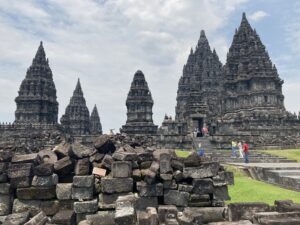
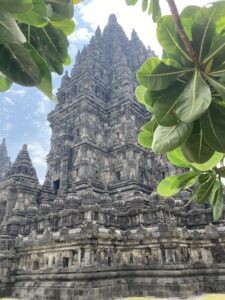
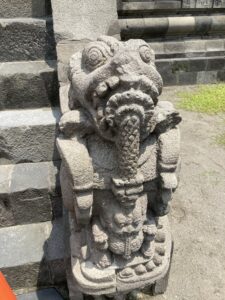
I was fortunate that, despite the pandemic, the Prambanan Temple complex was largely accessible during my visit. It is the largest Hindu temple in Indonesia and, in my humble estimation, the most impressive that I have visited in the country. Construction dates from about 850 and the site was abandoned about 100 years later. The ruins were discovered by Westerners in the 1700s, but a full effort at reconstruction didn’t begin until the 20th Century. Even so, what modern tourists see is only a fraction of the size of the original complex. I felt as though I had been transported to the 10th Century as I wandered through the Prambanan complex—it possesses a mystical and otherworldly feeling. If you visit, consider hiring one of the local government guides waiting at the entrance to accompany you as they provide interesting information and history. I believe Prambanan a “must see” attraction for anyone visiting Indonesia. This UNESCO World Heritage Site is about 25 km. from Jogja.
Borobodur Temple
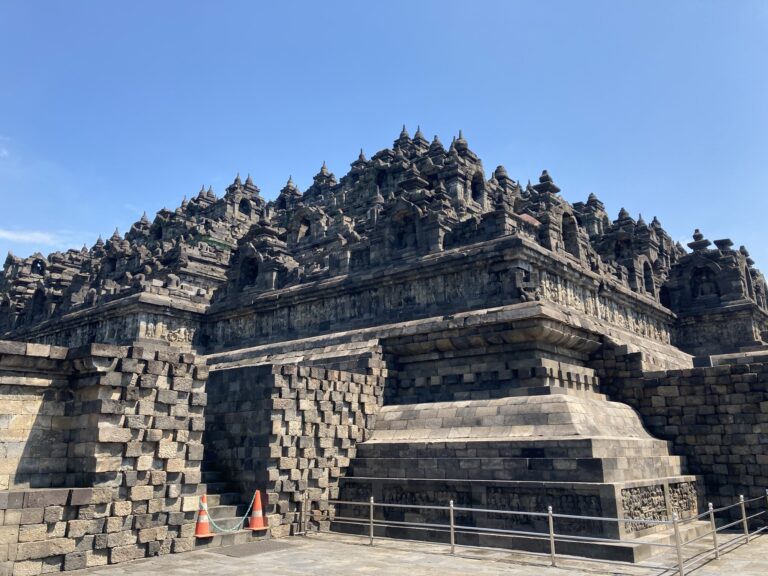
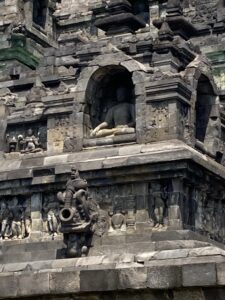
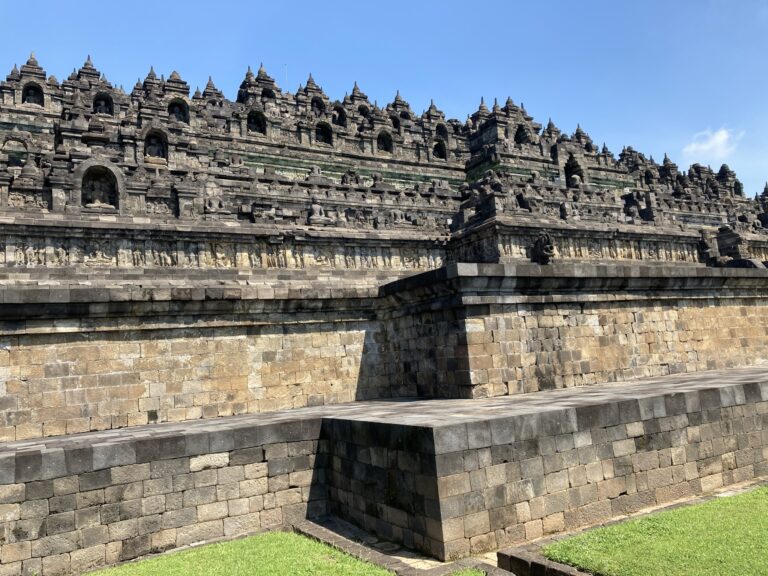
Another “must see” is Borobudur. It is about an hour’s drive from central Jogja, depending on where you are staying. Also a UNESCO World Heritage Site, Borobudur is the largest Buddhist Temple in the world. It dates from around the year 800 and was abandoned before two centuries had passed. Sir Thomas Raffles publicized Borobudur during his visits in the early 19th Century and restoration advanced in fits and starts, with work continuing into the 1980s. There are 2672 relief panels situated around the temple and the architecture showcases several magnificent stupas. Because of the pandemic we were not allowed to climb to the top of the stupas as is usually the case, but Borobudur is so extraordinary that it didn’t matter to me. Outside of pandemic times a visit during sunrise, which can be viewed from the top of the stupas, is considered the most amazing way one can experience this magnificent religious treasure.
Coffee Luwak
My driver from the Rosseno asked me if I wanted to stop at a place where they roast Coffee Luwak. Being the ignorant tourist that I was, I said, “sure.” It turns out that “Luwak” is another name for the small animal called a “palm civet.” These animals wander through coffee plantations and eat the coffee beans that have fallen onto the ground. They are unable to fully digest these beans, and the beans are excreted out in their feces. Many years ago, some curious (and in my opinion, very weird) person thought it might be a wonderful idea to roast these excreted beans to see what the coffee would taste like. And it turns out that some chemical process of digestion in the palm civet’s body changes the bean causing it to have a mellow, delicious flavor when roasted.
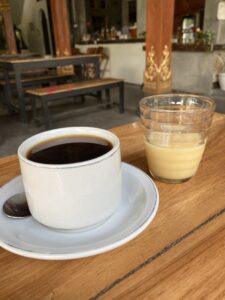
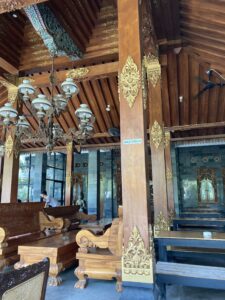
Nowadays, coffee luwak, is a big business. Reportedly, it is the most expensive coffee in the world. Sadly, the place my driver took me to was a coffee luwak place where the luwaks are in cages and are force-fed the coffee beans in order to make this mellow and expensive brew. Doesn’t seem like a great life for a luwak/palm civet to me. The coffee was ok, but didn’t seem worth the price to me, but then again, I’m not a coffee connoisseur. As a person who doesn’t like to see any creature, human or beast, force-fed anything, I am not a coffee luwak enthusiast, but at least I can say I had a cup of coffee that traveled through something’s ass before I drank it.
I hope to visit Jogja again in the future when I can fully experience everything this amazing historic city has to offer.
